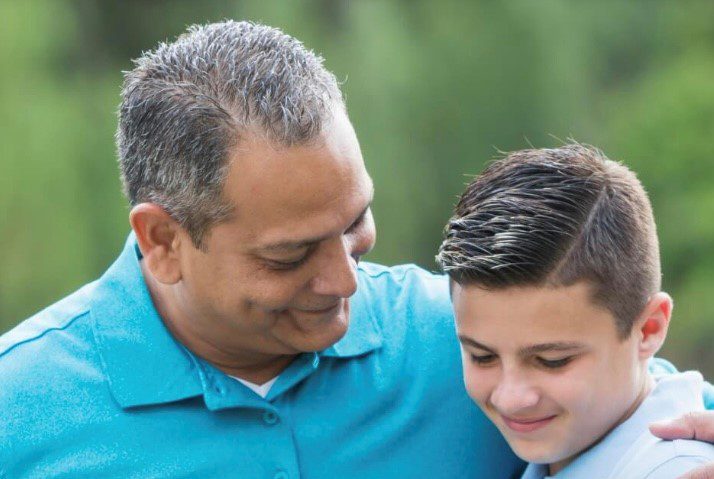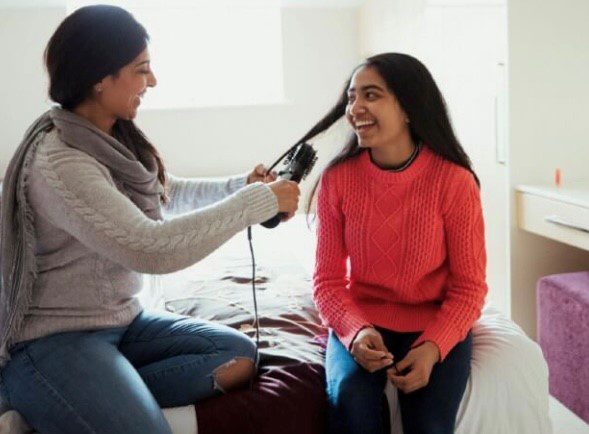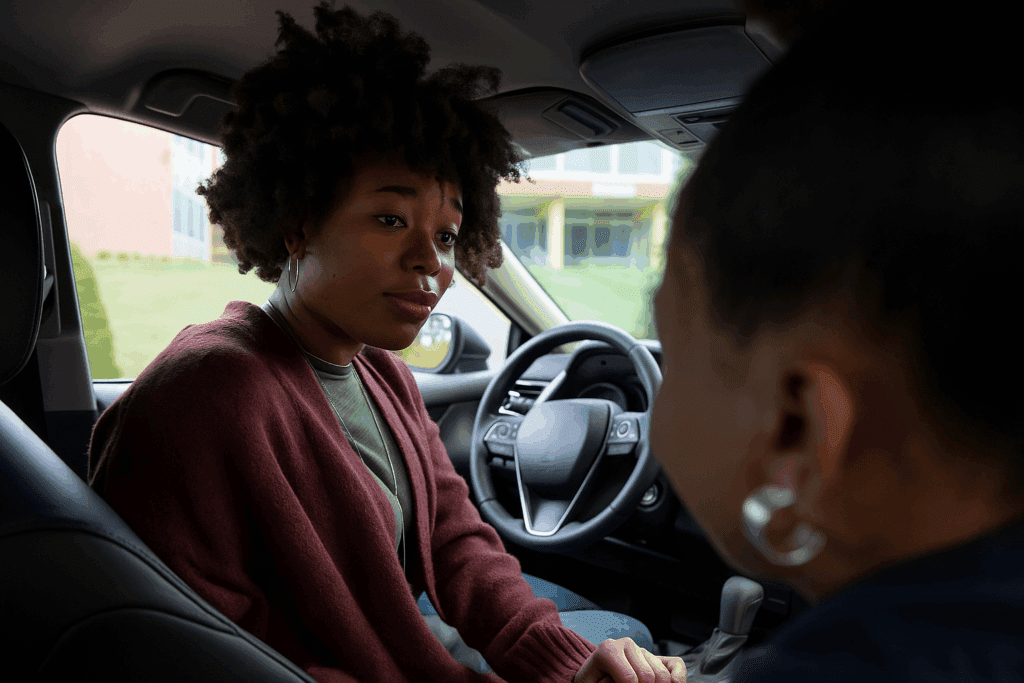Vaping Conversation Guide
You can play a significant role in protecting your child from the dangers of vaping and nicotine dependence. Use the tips and suggestions below as a framework for having a productive conversation.
Source: American Lung Association

Even though parents know their children best, this guide was developed in partnership with child psychologists and includes best practices for how to have the most effective conversation with kids on a tricky subject like vaping.
Before You Talk
Know the facts
Misinformation about vaping is everywhere. Two-thirds of teens don’t even realize that e-cigarettes contain addictive nicotine. Before the conversation, get comfortable with the key dangers and potential motivations for kids to vape. You may not feel like an expert, and that’s okay. Expressing care and concern is one of the best ways to support your child.
Check out our Get The Facts page
Put yourself in your child’s shoes
Consider your kid’s viewpoint. Imagine the obstacles, pressures and social environment before you address your concerns. Remember what it was like when you were a kid. Make sure to relate to them. Remind them that you’re on their side. When empathy is expressed and good communication exists, kids take fewer risks.
Take an open and calm approach
As you talk to your child, avoid judgment or frustration. Kids may pick up on your tone and tune out or react defensively. An open conversation will disarm the notion that this is a lecture. It will also provide a relaxed environment to discuss ideas without making them feel like they are being blamed or in trouble.
Find the right time and place
Wait for the right opportunity to increase the chance that you are heard. Maybe you’re passing a vape shop, watching TV together or talking before your child goes to a concert with friends. Pick a calm moment that is distraction-free. Asking your child about vaping when it is already top of the mind gives you a non-confrontational way to learn about your child’s awareness, interest and involvement without defensiveness.
Take time to practice
For imporant and potentially dificul conversations like these, it’s helpful to know exactly what you’d like to say before you say it. Take time, in front of the mirror or with a parner, to run through the points that you feel are most important. Consider how your child will react to the information. Try to anticipate how the conversation may go and come prepared to respond calmly to any situation.
Use tips in this guide and our Get The Facts page to help as you prepare.

While You’re Talking
Acknowledge your child’s independence
Your children make good decisions every day. Abstaining from vaping could be one of them. Thank them for their responsibility and appeal to their good judgment
“I’m really proud that you make good decisions. I trust you. I’m here to help answer any questions you have about vaping.“
Ask for their perspective
Hear their side of the story first. It’s good to know what they find appealing or unappealing about it. If they’re interested in trying it, ask why. Ask them open-ended questions rather than yes or no questions. This will help them open up, be engaged and be less defensive.
“How do you feel about vaping?”
Be ready to hear that your child may have vaped
A much higher percentage of kids have tried vaping than most parents recognize. There is a distinct possibility that your child has experimented with vaping. Make sure to start by thanking them for being honest. This is key for continuing an open conversation and a relationship of trust. Explain that your motivation is protecting and caring for them.
“I want you to know how much I appreciate your honesty. I’m concerned because I care about you and your health.”
Avoid scare tactics
It’s good to share your concerns, but don’t make the mistake of losing your child’s attention with dramatic claims. Equating vaping with other temptations or illegal drugs actually reduces your credibility and chances of connecting with them.
“I know that trying it once won’t kill you, but vaping is harmful to your lungs, your body and it’s addictive. Why take the risk?”
Connect with what they care about
Make their concern personal. Explain how vaping can prevent them from achieving their future goals. Use information from our Get The Facts page to point out how proven physical damage to lungs and brain will affect any athletic aspirations. Illustrate how vaping takes an invisible toll on mood, memory and attention span, impacting academic or career goals.
“You know that vaping can damage your lungs, making it harder to play sports you love like (example). Are you sure you want to risk something you love?”
After you Talk
Say thank you
Let your child know that you appreciate them for listening, for their honesty and for continuing to make the right decisions. Ending the conversation on a note of trust will make it easier for them to talk to you when they have questions or need advice.
“I appreciate you for handling this so maturely. I know this stuff can be scary or confusing. I just want to help you make safe and informed decisions.”
Help your child manage stress
Unfortunately, stress is universal and can be experienced at a young age. Talk to your kid about any larger concerns or pressures they may be feeling. Make sure they have healthy outlets for relief.
“If you ever feel frustrated or overwhelmed, know that I’m always here to listen.”
Help your child manage peer pressure
One of the largest motivating factors of youth vaping is influence from friends or classmates. Consider rehearsing or role-playing to give your kid the social tools to refuse tobacco
products. Offer some quick facts or an anecdote that they may feel comfortable sharing. For more information and advice on how to help kids handle peer pressure, explore this resource published by the University of Michigan.
“I know it can be tempting if your friends are vaping and offer to share it with you. What might you do or say if your friends offer to vape with you? Remember, you can always blame me as a way to say no.”
Follow Up
This isn’t a one-time conversation. Even if everyhing goes well, over time there will be new curiosities, product developments and research findings. Make sure to leave lines of communication open. Fact sharing is a great way to reintroduce the conversation topic.
“I know it’s a lot to take in all at once. If you have any questions or want to talk more about this later, I’m always here for you.”
Reference
Special thanks to Dr. Yasmin Cole-Lewis, Dr. Lisa Damour, and Dr. S. Christy Sadreameli, who provided issue expertise and feedback on this vaping conversation guide. Dr. Yasmin Cole-Lewis is a postdoctoral fellow in pediatric pain psychology at Boston Children’s Hospital. Dr. Lisa Damour is a psychologist, bestselling author, monthly New York Times columnist, and regular contributor to CBS News. Dr. S. Christy Sadreameli is a pediatric pulmonologist at Johns Hopkins Hospital, where she takes care of pediatric patients of all ages with a variety of pulmonary conditions. She also serves as a volunteer medical spokesperson for the American Lung Association.
More Featured Resources
-

Nicotine and the Young Brain
In young people, 5 mg of nicotine a day is enough to establish a nicotine addiction – about the amount of nicotine in one quarter of an e-cigarette pod. Learn more about nicotine and how it impacts the young brain. Source: Truth Initiative
-

Talk to Kids About the Risks of Vaping
Many teens vape on a regular basis, and most choose flavored e-cigarettes. Many kids think vaping is harmless, but it can have serious health consequences. Given the right tools and information, parents, educators, and other influential adults can make a profound difference in the lives of their children and students by sharing the facts and
-

This is Quitting: Resource to help young people quit vaping
This could be the year a young person you care about quits vaping. According to a survey by Truth Initiative, almost half (48%) of young nicotine users aged 18-to-24 are making quitting a priority for their New Year’s resolutions. Source: Truth Initiative There are many reasons young people may want to quit vaping, including physical